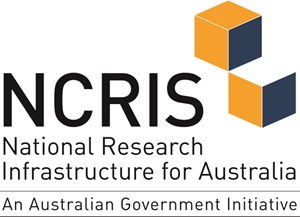Making Australia's biodiversity information accessible
Effective biodiversity research and management rely on comprehensive information about the species or ecosystems of interest.
Without this information it is very difficult to obtain reliable results or make sound decisions.
A major barrier to Australia's biodiversity research and management efforts has been the fragmentation and inaccessibility of biodiversity data.
Data and information on Australian species has traditionally been housed in museums, herbaria, universities, and government departments and organisations.
Obtaining records and data sets from these groups involved considerable time and effort, and often resulted in incomplete information.
To overcome these issues, Australia's biodiversity information needed to be brought together and made easily available in the one place.
Building a collaborative tool for sharing and analysing Australia's biodiversity information
A collaboration between CSIRO, Australia's museums and herbaria, universities, and the Australian Government established the Atlas of Living Australia (ALA); a national project focused on making biodiversity information accessible and usable.
The ALA is funded by the Australian Government through the National Collaborative Research Infrastructure Strategy (NCRIS).
Since 2010, the ALA team has worked to aggregate Australia's biodiversity information and make it available online at the Atlas of Living Australia.
Founded on the principle of data sharing – collect it once, share it, use it many times – the ALA provides free, online access to more than 85 million occurrence records1, based on specimens from natural history collections, field observations and surveys.
These records are enriched by additional information including molecular data, photographs, maps, sound recordings and literature.
This vast repository of information makes the ALA the most comprehensive and accessible data set on Australia's biodiversity ever produced. With additional records and information being added to the ALA on a regular basis, the ALA is constantly growing.
The ALA also features a wide range of powerful, open-source mapping and analysis tools, which allow users to explore and analyse information in new ways.
Over 400 spatial layers let users explore the relationships between species distribution and factors such as rainfall, temperature, soil moisture, political or regional boundaries, fire and vegetation.
A more detailed picture of Australia's biodiversity
The ALA is opening up research possibilities, improving knowledge of our biodiversity, and changing the way environmental management occurs in Australia.
By aggregating biodiversity information and making it more available online, the ALA is assisting scientists, planners, managers and others to create a more detailed picture of Australia's biodiversity, its threats and future.
It allows users to focus on discovering answers to their questions, rather than searching for and managing data. The number of records downloaded from the ALA reached an impressive 19 billion in July 2019, demonstrating the value of this kind of data sharing.
Global leadership
Working with the Global Biodiversity Information Facility (GBIF), the ALA continue to facilitate other countries to develop biodiversity information platforms using ALA e-infrastructure. The ALA’s open source platform is becoming a critical component within the GBIF network. Spain, France, Portugal, Canada, Sweden, Andorra, Costa Rica, Argentina, Brazil and Scotland have used ALA’s open infrastructure to help establish national biodiversity information portals, with several other countries investigating its use.
The benefits of combining international collaboration with digital technology include improved data delivery and access as well as reduced costs and risks. The end result is bespoke infrastructure that is adaptable and suitable for the needs of different countries.
The ALA is made possible by contributions from its partners, is supported by NCRIS, is hosted by CSIRO, and is the Australian node of GBIF
- As at July, 2019.


